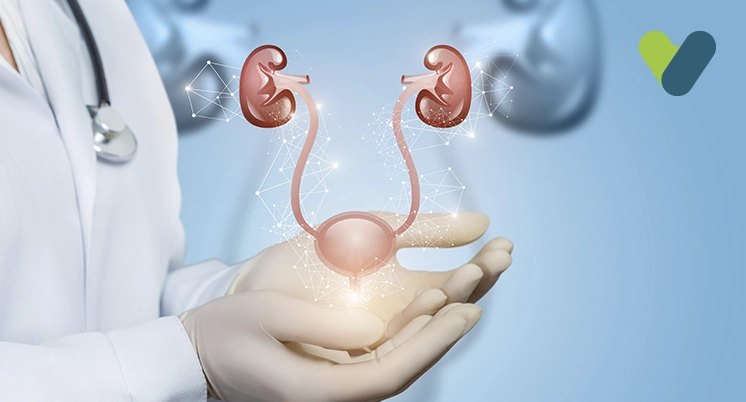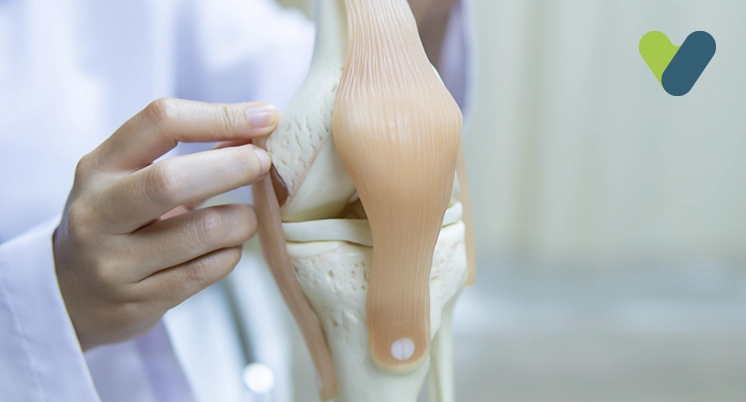Overview
The shoulder blades and humerus, the upper arm bone, are connected by a group of muscles and tendons known as the rotator cuff. The rotator cuff keeps the upper arm bone in the shoulder socket. The subscapularis, supraspinatus, infraspinatus, and teres minor are the 4 muscles that compose the rotator cuff. A tendon connects each muscle to the arm bone. The procedure used to fix the damage in one of the tendons is known as rotator cuff tear surgery.
Rotator cuff injuries can occur in individuals of any age group. While some individuals are comfortable with the surgical options, others will choose alternative therapies. The rotator cuff may become damaged over time as a result of wear and tear or bad movement habits. The rotator cuffs are at risk from two movement patterns: slouching and constantly moving your head forward.
Calcium build-up in the shoulder area or bone spurs brought on by arthritis can irritate or compress the rotator cuff as you grow older. Another factor is severe stress. Professional baseball players, tennis professionals, swimmers, and workers in the construction and painting industries all run the risk of developing rotator cuff tears.
Increased usage can cause tendons to become swollen or ripped, either partially or completely. Bursitis may also cause stress on your shoulder. The bursa, a fluid-filled sac located between your rotator cuff and shoulder joint, gets swollen and painful with this condition.
An injured rotator cuff shows the following signs: weak shoulders, reduced range of movement in your shoulder joint, reduced amount of motion in the shoulder joint, shoulder soreness, and difficulty moving your shoulder (particularly while lifting, pulling, or reaching overhead).
Who needs a rotator cuff tear surgery or rotator cuff repair
An injury to the shoulder is common. Because of repetitive motion and misuse of the shoulder, athletes and those who do manual labour, are prone to rotator cuff tears. A fall or other shoulder injury could cause the rotator cuff to be affected. Damage could also develop gradually over time.Rotator cuff tears could result from:
- Bursitis (inflammation of the bursa in the shoulder).
- The rotator cuff expands or tears.
- Tendinitis (inflammation of the shoulder's tendons).
The most typical symptoms include repeated pain, restricted arm movement, and muscle weakening. Rotator cuff surgery can be an option if medicinal therapies are unsuccessful. In case the nonsurgical treatments are ineffective at reducing your symptoms, your doctor may suggest surgery to repair a rotator cuff tear.
Additional signs indicating surgery might be a good choice include:
- You have a big tear (greater than 3 cm), yet the surrounding tissue is in great condition.
- Your signs have continued for six to twelve months.
- The tear was brought on by a recent injury.
- Your shoulder is severely weak and no longer functions as it should.
Surgical techniques for rotator cuff injuries
The three methods for rotator cuff repair that are most applied are:Arthroscopic repair The doctor will perform the arthroscopy on the shoulder, during which they will insert a micro camera into the joint. The surgeon uses the camera's live visual feed to operate microscopic surgical instruments. Arthroscopic repair requires significantly smaller cuts compared to open surgery, thanks to the thin and compact surgical equipment.
. The least invasive technique to heal a rotator cuff tear is an all-arthroscopic repair, which is typically performed as an outpatient treatment.
Open repair If the tear is significant or complicated, a typical open surgical incision (a few centimetres long) is frequently necessary. To better examine and reach the torn tendon, the surgeon makes a cut over the shoulder and splits or separates the deltoid muscle, which makes up part of the shoulder.
Acromion bone spurs are normally taken out during an open repair by the surgeon. An open repair could be a wise choice if the tear is big or complex and there is a need for further repairs, for example, a tendon shift.
The initial treatment method for damaged rotator cuffs was an open repair. Less invasive procedures have become more common throughout time thanks to advancements in technology and greater surgical skills.
Mini-open repair In comparison to a typical open repair, the mini-open repair requires a much smaller open incision.
This method often employs arthroscopy to detect and repair damage to many other joints. For example, arthroscopic removal of bone spurs is common. Consequently, there is no need to separate the deltoid muscle.
The physician then performs the rotator cuff repair through the mini-open cut after the arthroscopic phase of the treatment is finished. The surgeon doesn't use a visual monitor to view the shoulder components during the tendon surgery.
Preparations required for a rotator cuff surgery or rotator cuff repair The recovery from rotator cuff surgery depends on deep healing. It's a high-maintenance surgery; therefore, there is no quick fix in which the surgery is completed, and you get better without doing anything else.
Practice your everyday tasks: Nevertheless, keep in mind that 4 to 6 weeks of one-handed work can be difficult to manage if you are not adapted to it, notably if you lose the use of your dominant hand. This preparation may seem ridiculous. It is usually advisable, although not always practical, to have someone on hand. You'll have an advantage if you practise your daily tasks in advance.
Establish your support system: Even though rotator cuff surgery is normally performed as an outpatient procedure, meaning you can return home the same day, you are likely to be put under general or regional anaesthesia, which means you won't be able to do much for yourself till the anaesthetic wears off. After the surgery, you'll need a partner to accompany you home, and assist you with getting dressed, taking a shower, eating, and managing your prescriptions. This companion can be a family member, friend, or hired aid.
Design a strategy with a physical therapist: Contacting and setting up a pre-operation consultation with a physiotherapist is a fantastic way to be prepared for what will happen following the treatment.
Design sleeping arrangements - Difficulty sleeping is one of the most prevalent complaints among patients who have had rotator cuff surgery. It's difficult to fall asleep when you're in pain, but it's even harder when your preferred sleeping position might not be possible. Sufficient money – rotator cuff tear surgery cost in India is approximately between INR 60,000 and INR 2,50,000. To have this procedure, a person needs to have enough money.
What happens during a rotator cuff tear surgery?
Arthroscopy is used to execute rotator cuff surgery. During shoulder arthroscopy, small cuts are made to direct an arthroscope, a brief instrument with a camera connected to one end, to the location of the injury. The rotator cuff repair can be done with the least amount of damage to the surrounding muscles and tissues necessary with the aid of specially designed equipment.
Patients in hospitals undergoing surgery have this operation done while under a regional anaesthetic and partial sedation, as opposed to a general anaesthetic. As a result, less anaesthetic and painkiller is given, which in turn minimises vomiting and nausea. Thanks to improvements in anaesthesia and less invasive treatments, the majority of patients can now go home within a couple of hours of their surgery.
To identify and address further problems, such as a labrum tear, loosened bodies, or biceps ligament damage. The first procedure is an arthroscopy of the glenohumeral joint, which is the ball and socket portion of the shoulder joint. A moderate rotator cuff tear, which is considered one that reaches just under 50% of the tendon's thickness, can now be cut down using a razor.
After that, the arthroscope is positioned in the subacromial area, which is where the rotator cuff tendon lies beneath the acromion, a bony projection at the head of the shoulder blade. After that, the subacromial space is opened by performing a subacromial decompression. To avoid stretching and rupturing the rotator cuff, an acromioplasty involves the excision of a bone spur and anomalies on the bottom of the acromion. After that, the severed tendon is surgically reattached to the bone with adhesive anchors and sutures.
What happens after a rotator cuff tear surgery?
It is normal to experience fatigue for a few days following rotator cuff surgery. Around the operative site, some inflammation and pain are also common. Before being able to perform tasks like sports activities, recovery often includes three phases and takes up to a year.1-6 weeks (phase 1): The majority of the time when recovering, a person often wears a sling. However, each surgeon uses it for a different amount of time. Except for the activities called for during physical rehabilitation, the operated shoulder is generally not allowed to be used.
7-12 weeks (phase 2): The majority of people will be going to physiotherapy sessions at this point. On the recommendation of their doctor, physiotherapist, or both, patients can frequently resume some mild tasks, but they should gradually increase their activity. Exercises will be created by medical professionals to aid in regaining movements and muscle strength.
12 weeks onwards (phase 3): Most people can start increasing their activity levels 12 weeks after surgery, which will help them restore shoulder strength and make use of their entire range of motion. To have the best outcome, it is always important to follow all recommendations made by the surgeon and physiotherapist.


